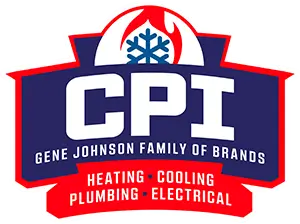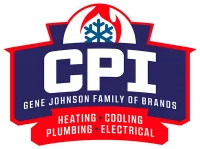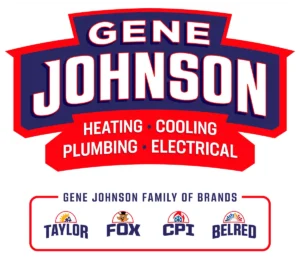What is a Furnace Pilot Light?
A furnace generates heat for whole-home distribution. With a series of steps throughout the burner assembly, your furnace turns various resources into quality heating.
Air, gas, coal, wood, oil, and electricity are the most significant resources furnaces use to produce heat. However, a separate fire source must light the fuel supply to produce any output.
The furnace pilot light instigates ignition and is the most critical component of the entire process. Without a pilot light, the heating process is never initiated.
Below, you can learn more about the pilot light, what it does, and how to care for it.
The Exact Definition of a Pilot Light
We all know what pilot and light mean, but what do they mean when they are used together?
The word pilot can be used as a verb, which means “control.” Since the pilot light instigates combustion through ignition, it is the base of all controls.
It then makes more sense that the dictionary definition of the pilot light is “control flame” because the flame controls the entire combustion process.
That was easy! While the pilot light’s definition is pretty easy, its task in the entire heating process isn’t as simple.
What Does the Pilot Light Do?
Here’s the short answer:
The pilot light ignites the fuel supply to produce ambient or water-use distribution heat.
The pilot light, also known as the pilot flame, sets off combustion, which allows your furnace to generate its own heat. It may be the very first step or part of the primary series in the entire heating process.
It is placed at the tip of burner chambers, near air ducts, and sometimes behind an access panel. You might see your furnace’s pilot light through a small inspection window or sight glass.
Do All Furnace Systems Have Pilot Lights?
Nearly all older furnace systems have one to ignite their combustion process. There are two common kinds of pilot lights.
A conventional furnace may have an intermittent or standing pilot light, while newer installations have smarter electronic elements.
These days, newer furnaces have electric ignitors. Your new furnace installation may have electronic starters or spark plugs.
What Are Different Kinds of Pilot Lights?
The two main types of traditional pilot lights are the standing and intermittent types. While newer installations have automated ignitors, intermittent pilot lights closely resemble electronic starters.
Below you will find a brief explanation of each variety. Let’s start with the traditional types:
- The standing pilot light stays on the entire time your furnace is cycled on while the gas flow is altered according to your temperature demands.
- An intermittent pilot light flickers on and off throughout the heating cycle, depending on your preferred temperature settings.
To simplify, think of these two pilot lights having opposite functions. Yes, they can have opposing functions while serving the same purpose.
But how?
The standing type stays on while fuel flow and other resource intake are adjusted to achieve your desired temperatures. The standing pilot light process makes the flame “constant” and the other resources “variables.”
The intermittent type works in the opposite way. Intermittent pilot lights flicker according to a constant circulation of various resources. In this setting, the flame is considered the “variable” aspect while the resources are “constant.”
What about the newer kind of pilot light?
- A spark plug or electronic starter ignites and extinguishes itself independently, according to your home’s thermostat settings.
Your new furnace uses integrated smart sensors to provide its internal components with their own temperature readings. You might think, “Isn’t that just like an intermittent pilot light?”
In a way, it is. Electric starters are just the second evolution of intermittent pilot lights. The only difference between the two is how they know when to turn it on and off.
Conventional pilot lights rely on external systems or manual settings. Electric starters are highly automated, relying on internal components to provide appropriate commands to deliver your desired temperature.
Should I Turn the Pilot Light OFF
When your furnace is not in use, it’s best to extinguish any internal flames.
Furnace systems typically shut all components down. Still, flaws in the system and mechanical malfunctions may maintain the flame after you shut the furnace down.
Inspect the pilot light through the furnace’s viewing window or remove the access panel after you turn the furnace off.
If you don’t see a flame where the pilot light sits, it’s most likely already extinguished. However, some furnaces require manual controls.
You can manually turn the pilot light off by removing the access panel from the front of the furnace and turning its control knob.
When you remove the access panel, you will see a knob with the word “pilot” or “light” written on it. Turn the pilot light knob into the off position and wait until the flame is fully out before closing the access panel.
You should do the same with your gas shutoff valve for extra precaution. Locate the gas shutoff valve attached to the gas pipe toward the body of the furnace.
How to Relight the Pilot Light in Seven Easy Steps
It is unlikely for a gust of wind to blow out your pilot light, but there are other possibilities.
A pilot light is fueled by a separate gas supply attached to the primary source. The pilot light’s supply is typically derived from the gas pipe that supplies your furnace or the rest of your home.
Sometimes, the pilot’s gas supply is hindered due to inlet pipes being clogged or blocked. In that case, you must remove pipe blockages and relight the pilot light.
Here’s how you can do that:
- Access the pilot light assembly. It is most likely at the front-most part of your furnace.
- Locate the reset switch. It is typically on or below the pilot’s knob.
- Turn the pilot light and reset switch OFF. It should be accessible enough to do with your fingers.
- Wait for at least two minutes. It’s critical to allow any residual gas flow to dissipate.
- Turn the pilot light ON.
- Hold a lit match or lighter to the pilot light, and press and hold the reset switch. Keep your hand on the reset switch until the flame is steadily firing.
- Release the reset switch and observe the flame.
These easy steps should ignite an otherwise functioning pilot light. If these steps aren’t enough to jump-start your furnace, there may be underlying problems.
Why is my Pilot Light Flickering?
If you have a standing pilot light, it shouldn’t be flickering. A standing pilot light rarely needs resetting.
If you have had to relight your pilot light more than once, there’s a problem.
Furnace problems can stem from supply or ignition issues. Your gas supply may be insufficient or hindered.
You must inspect all gas pipe attachments to know exactly where the problem originated.
Your pilot light may also be congested with residue or corrosion. Inspect the pilot light’s tip.
Does your pilot light look dirty, rusty, or corroded?
When was the last time a professional inspected your entire heating system? Most homeowners don’t call for professional assistance until something is noticeably wrong.
Routine inspections save you from unexpected mechanical failures and help stabilize your heating system.
Enlisting a professional inspection or tune-up service can prevent your furnace from faltering this winter.
Preventative Maintenance for Furnace Systems
Owning a furnace for as long as some of us have, we know all the problematic possibilities we may face. Whether it’s the pilot light extinguishing, gas leaks, and electrical errors, heating systems require constant observation.
Remember, your furnace can be volatile. While furnace systems are traditional nationwide, housing various fuel supplies with a fire burning all in one system is potentially dangerous!
Most homeowners are already comfortable with having a furnace somewhere in the house, but no one should ever be complacent around them.
Stay vigilant of your furnace and all the risks it has in tow.
Be mindful of gas leaks and other threats! While gas is naturally odorless, manufacturers integrate distinct odors into the element to alarm owners when there’s a leak.
However, you might pick up on a gas leak before your nose does.
Warning Signs Your Furnace Needs Professional Attention
Do you have a gas leak?
The slightest break in gas lines can drastically reduce heat distribution and cycle your furnace on and off.
Unfortunately, gas supply lines are prone to abrasions due to exposure. Even copper pipes can only take so much before succumbing to corrosion and other risk factors.
Is your home experiencing any inexplicable utility costs?
Even with faulty elements producing lesser output, other furnace components may be going on overdrive to overcompensate for its poor performance.
When some components are compromised, all the others may be burdened with more than they can carry. This results in higher utility costs without any improvements in its heating output.
What should you do when you notice these symptoms?
It’s best not to wait until something sounds, smells, or feels off before conducting an examination.
It would be best to regularly inspect each of your furnace’s components to keep your ducks in a row. It may prevent any unforeseen mechanical malfunctions later.
You should entrust your heating systems to the pros if you lack the relevant experience. Don’t hesitate to call a reliable HVAC professional for assistance!
Who Should I Call in Mount Vernon, Washington, for Heating Repairs?
If you need furnace repair and replacement in Mount Vernon, WA, don’t opt for just any service!
Choosing some of Washington’s finest HVAC technicians would be best for your furnace, home, and overall convenience.
Call CPI Plumbing & Heating for a free quote or expert consultation regarding heating concerns.


